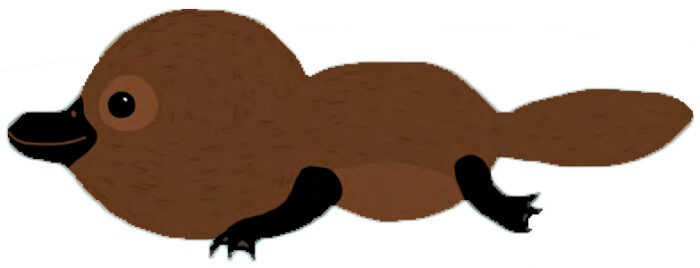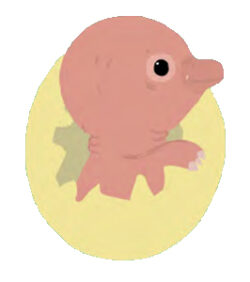
Why do some mammals lay eggs?
The question of why some mammals lay eggs, among other questions, has been answered in a study in 2021 that looked at monotreme (egg-laying mammal) DNA. Researchers sequenced the genomes of platypuses (and echidnas) and compared them to that of chickens, humans, rats, Tasmanian devils, and lizards to "[improve] our understanding of how other mammals evolved — including us humans” (Senior co-author, Professor Yang Zhou).
First things first, what is genomic sequencing?
In simplest terms, the genome is a biological blueprint. Genomic sequencing or mapping is reading that blueprint to understand how and why an organism is the way it is.The curious case of the modern platypus.
The Platypus is a curious creature. It is a duck-billed, beaver-tailed, otter-footed, egg-laying aquatic creature native to Australia. They scoop up insects and larvae, shellfish, and worms in their bill along with bits of gravel and mud. They store all this in their cheek pouches and, since Platypuses don't have teeth, the bits of gravel help them to "chew" their meal. And if that's not enough, the male of the species is also one of the world’s few venomous mammals! The study provided "answers to how a few of its bizarre features emerged” (Senior co-author, Professor Guojie Zhang).

When did egg-laying mammals evolve away from therians?
Monotremes diverged from therians (mammals that give birth to live young without a shelled egg) around 187 million years ago. The platypus evolved from its ancestor around 55 million years ago. "This estimate provides a date for the monotreme–therian split that is earlier than previous estimates (about 21 million years ago), but agrees with recent analyses of few genes and fossil evidence," (Y. Zhou et al. Nature, published online January 6, 2021).
Why do they lay eggs unlike other mammals?
To lay eggs you need to have vitellogenin genes for the production of egg yolks, there are three vitellogenin genes in total. As humans evolved we lost these genes, but chickens continue to have all three. Platypuses still carry one of the vitellogenin genes, the other two disappeared roughly 130 million years ago. It's because of this gene that they lay eggs.
How are they able to produce milk like other mammals?
In all other mammals, vitellogenin genes have been replaced with casein genes. They create casein protein, which is in mammalian milk. The platypus carries casein genes as well. Like all mammals, platypuses have mammary glands but they don't have teats. Instead, the milk oozes from the surface of their skin, which looks like sweat, but platypuses are aquatic and don't produce regular sweat at all.
“[This] informs us that milk production in all extant mammal species has been developed through the same set of genes derived from a common ancestor which lived more than 170 million years ago — alongside the early dinosaurs in the Jurassic period.”
(Y. Zhou et al. Nature, published online January 6, 2021)

Why don't they have teeth like other mammals do?
The modern platypus has two horned plates that are used to mash food. While its nearest ancestor did have teeth, the platypus lost its teeth roughly 120 million years ago when four of the eight genes responsible for tooth development disappeared.
How is the sex of the platypus determined?
Every other mammals have two sex chromosomes that determine sex, the X and Y chromosome system in which XX is female and XY is male. It turns out platypuses, however, have 10 sex chromosomes, with five Y and five X chromosomes.
"The genome mapping reveals that the majority of monotreme sex chromosomes have more in common with chickens than with humans. But what it shows is an evolutionary link between mammals and birds.”
(Y. Zhou et al. Nature, published online January 6, 2021)





